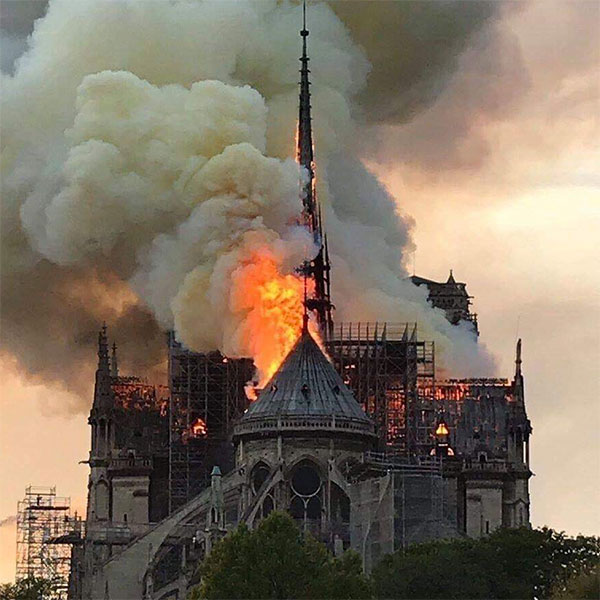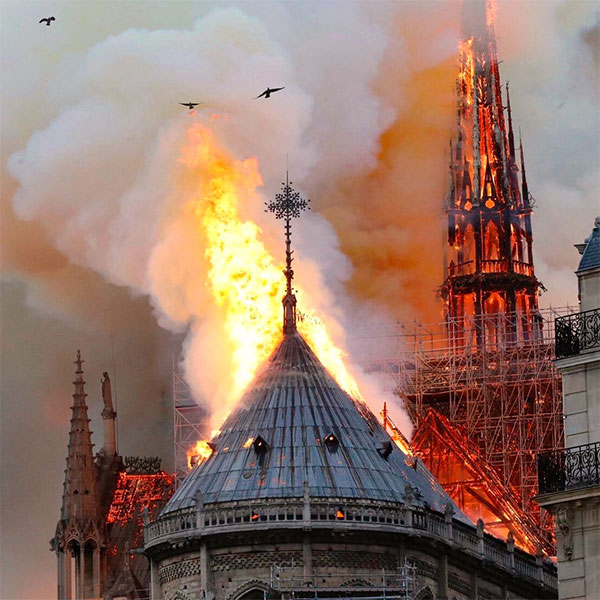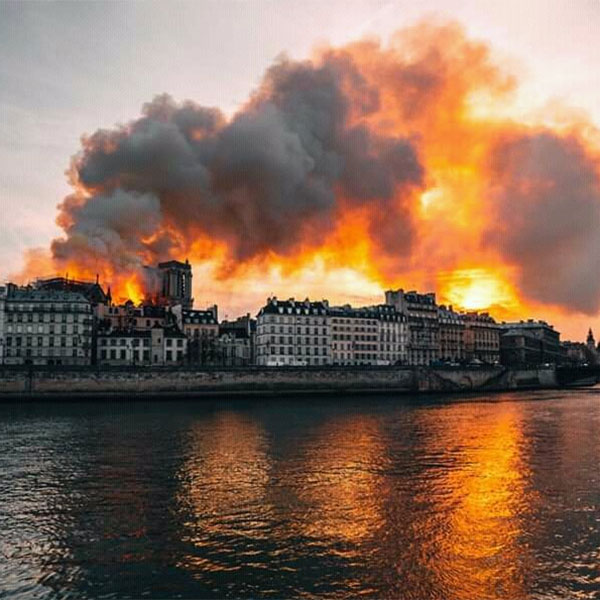
Notre Dame, FRANCE: Over the last few hours, on the evening of April 15, 2019 (Paris, France time) we watched in disbelief on live television as one of the greatest man-made marvels, the Notre Dame Cathedral of Paris, was engulfed in flames.
As we watched the Notre Dame Cathedral in Paris, France, engulfed in flames, we reflect on its significance.
As it happened, we wondered how it was possible. Were there no sprinkler systems in place? How did it all start and how could it spread so fast? Could some of the treasures, paintings, books and wooden crosses be carried out fast enough? What about the organ? Were any people injured? So many questions, yet no answers. Hours later and I remain deeply distressed, hence my need to put my feelings in writing.
Photo credits to the above: Unknown onlooker.
Want to claim copyright? Let me know and I’ll immediately the remove photos.
Footnote (which I moved to the headline):
When I see the massive outpouring of grief in response to the damage of a man-made building and treasures, I can’t help to wonder why did we not see such massive grieving while hundreds of thousands of people were dying (and still are dying) in war zones, such as Syria and Yemen. Do we have our priorities in life totally mixed up? Just wondering… (see the link below to my photos of Syria and Yemen before the war… note the beautiful kids…)
Fire. We still have little power over fire. Man remains at the mercy of the fire god. Will we ever win this battle? I don’t think so as we still don’t truly understand our greatest friend and foe on this planet.
The Notre Dame is, or rather was, so much more than a building. It was a French icon that withstood the test of time for over 850 years. It was a world icon, as so many people around the world loved and marvelled at it.
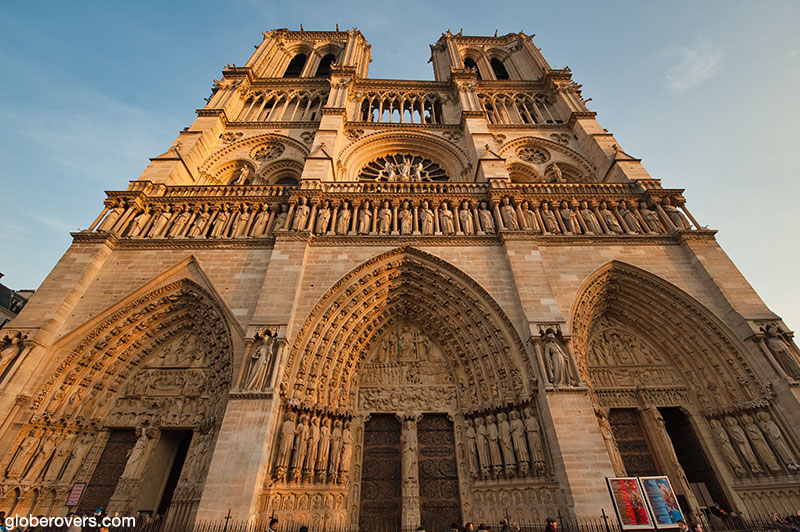
For those who have never been to Paris, Notre Dame was a reason to visit the French capital in the near future. It was part of the Paris dream. Many of us who have been to Paris most certainly visited the Notre Dame, located at the eastern end of the Seine River island called Île de la Cité (which once was home to a Gallo-Roman city known as Lutetia). No visit to Paris was complete without a visit to, what I call the “Paris Triangle of Marvels”. This includes the Notre Dame Cathedral, the Arc de Triomphe, and the Eiffel Tower, all located in a lopsided triangular setting in downtown Paris.
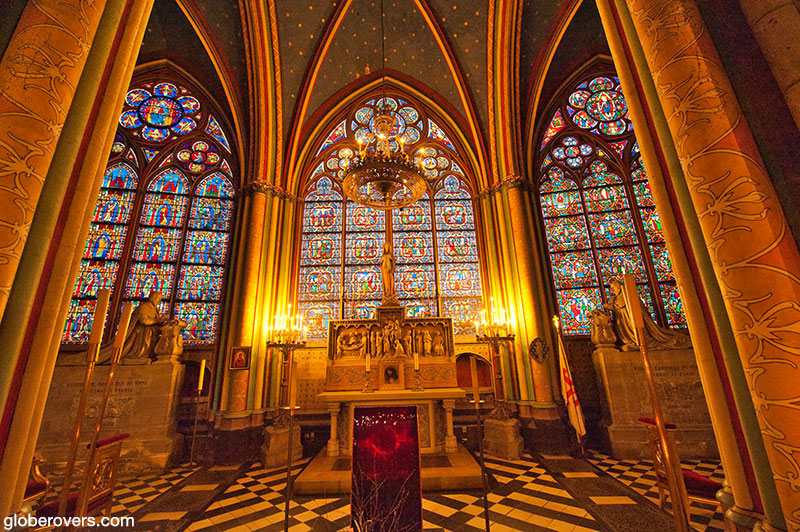
I have been to Paris four times and every time I visited, I had to walk this triangle. It was the mental stamp of confirmation that I was in Paris. For me, no visit to Paris was complete without even just a quick glance at each. Symbolically it was the same as the World Trade Towers in New York City. No visit was complete without seeing the Twin Towers. I used to live in Toronto and went to New York many times. Sometimes I was lucky enough to see the Twin Towers from the plane, or from the bus as we approached Manhattan. At times when I arrived downtown without having laid eyes on the towers, my first priority was to get to a viewpoint from where I could get that mental stamp of confirmation that I was indeed in New York City.
With the Notre Dame, the stamp of confirmation was the interior rather than the exterior. I could never just stand outside without going in. Even if there was a queue, which was never long, I had to go inside and get that immense warm feeling of “wow, what an incredible masterpiece”. Each visit proved to be a tremendous epiphany for me. Over and over again it never ceased to amaze and enthral.

Looking in every direction I always thought: “How did they do it?”. The entire interior of this cathedral was a masterpiece. The wood-carved pulpits and altar, gothic sculptures, it’s three massive stained-glass rose windows, and the treasury with its many precious objects such as crosses and crowns, made of gold and precious materials. My eyes always locked on two places: the choir with its 14th-century screen portrayal of the biblical Last Supper, and the massive pipe organ. Known as the Great Organ of Notre Dame, it dated back to the 15th century and had 56 notes, a 32-note pedalboard, 5 keyboards, and an incredible 1,840 pipes. While there have been numerous alterations and improvements to the organ over the centuries, some of the pipes date back to the 18th century. Close your eyes and imagine this organ playing Johann Sebastian Bach. Hear the astonishing acoustics. Incredible!
Will we ever forget the long halls, vaulted ceilings, and soft sunlight filtering through intricate coloured stained glass? A surreal experience to treasure if you are lucky enough to have been there.
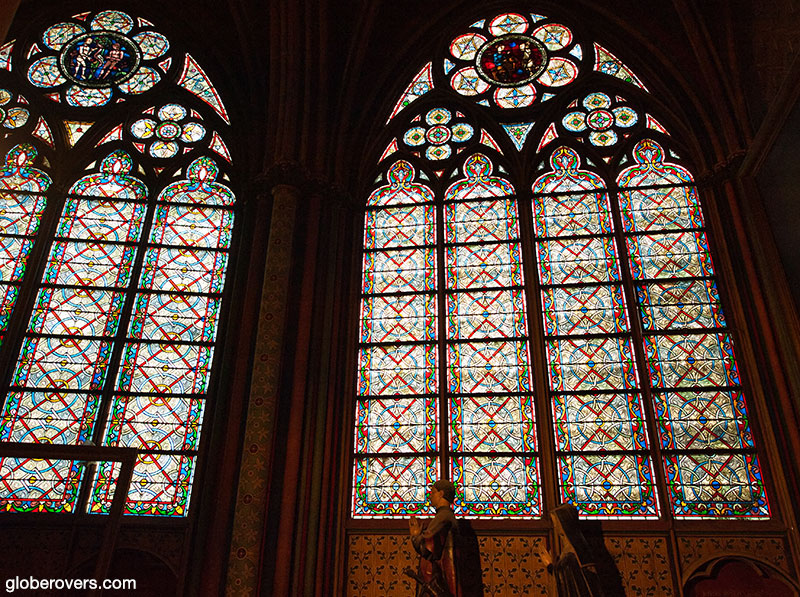
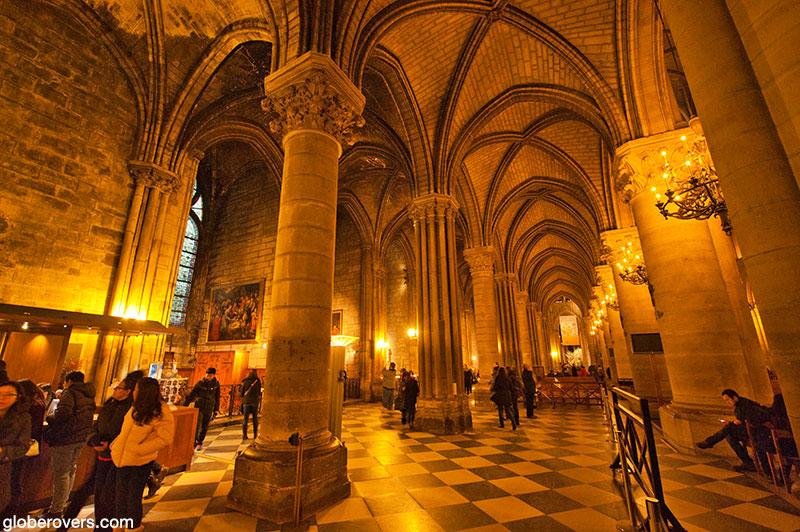
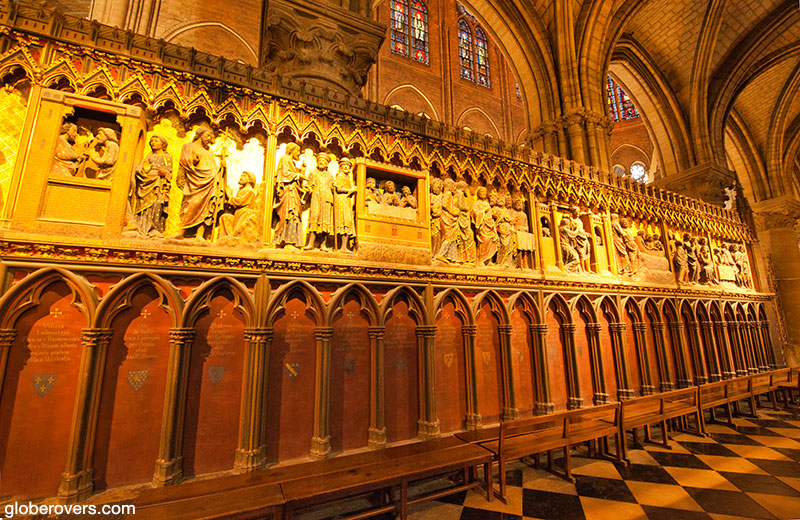
I have never looked at the Notre Dame Cathedral on Google Earth until just five days ago when I showed a friend of mine who has never been to Paris. I zoomed up closely and circled around the cathedral and we both were in awe of how 3D technology has advanced to allow us to see this building so clearly from all aspects. I even showed him a few of my recent photos dating back to 2013. This was the first time in several years that I looked at my Notre Dame photos. How bizarre that just five days later this cathedral would be destroyed in a fire.
As the world woke up this morning after the horrific night we endured, we see replays over and over on television. Thousands of “before and after” photos on social media. We are horrified and deeply distressed. We need to realize that every day we should appreciate what we have, and who we have, as it could all disappear in the blink of an eye.
This is exactly what motivates me to travel and see the world, as what we have today may not be around tomorrow. I am so glad I travelled through Syria and Yemen before their civil wars. So much of these two countries’ history and architectural wonders were recently destroyed. Destruction that continues to this day. Take a look at my articles and photography in the December 2016 issue of GlobeRovers Magazine so see what Syria and Yemen were like before the extensive destruction.

Legendary American newsreader Dan Rather tweeted: “Will we rebuild? Yes. Notre Dame? Our country? Our world? Yes. It won’t be easy. It won’t mitigate the damage or the pain. But we have no other choice. To think otherwise is to succumb to the darkness”.
As the fire was burning out of control, French President Macron last night stood near the inferno and declared at a brief news conference: “Notre-Dame is our history, our literature, part of our psyche, the place of all our great events, our epidemics, our wars, our liberations, the epicentre of our lives. We will rebuild Notre-Dame together”.
Yes, we will. I trust the French won’t take as long to rebuild as the Americans did at the site of the World Trade Centre. I also trust the French will rebuild the Notre Dame to look just like the Notre Dame we know, and not like the totally out-of-place building that now greets us in New York. We have forever lost our Twin Tower stamp of confirmation.
Here are a few interesting facts taken from various sources (Note I have not verified all of these facts).
- The cathedral is roughly 128 metres (420 ft) in length, and 12 metres (39 ft) wide in the nave.
- The interior is 130 metres by 48 metres (427 ft by 157 ft) and the roof is 35 metres (115 ft) high.
- The cathedral celebrated its 850th anniversary in 2013.
- Writer Victor Hugo used the cathedral as a setting for his French romantic/gothic novel “The Hunchback of Notre-Dame” (Our Lady of Paris), published in 1831.
- About 13 million people visit the Notre Dame Cathedral every year. That on average is 30,000 people every day. Free entrance!
- The cathedral is often affectionately referred to as “The Forest” because of the many wooden beams that have been used in its construction, and each of the beams came from a different tree, many of which were around 300 to 400 years old. In fact, this building is made of 1,300 oak trees that represent approximately 21 hectares of forest. Now we know why it burnt so well.
- The nave structure supports a lead roof that comprises 1,326 tiles that are each 5 mm thick and weigh in at 210,000 kg (462,970 lbs)
- The South Tower (68 m/223 ft) is home to the grand Emmanuel Bell that dates from the 15th century, which was recast in the year 1681 upon the request of King Louis XIV, who also gave the bell its name. The bell weighs in at 12,800 kg (14 tons).
- There also used to be a second bell named Marie, but it was melted down during the French Revolution to make cannon balls.
- The North Tower (68 m/223 ft) originally had eight bells, but these were all destroyed during the French Revolution.
- During the French Revolution, 28 statues of biblical kings in the cathedral were pulled down and decapitated by a mob with ropes. Their heads were discovered under the basement of the French Bank of Foreign Trade in 1977 and they now rest in nearby Musée de Cluny.
- After the French Revolution, it was rescued from possible destruction by Napoleon I.
- According to early plans, each tower was supposed to be crowned by a spire, though that never happened.
- The Crown of Thorns which was placed on the head of Jesus during the events leading up to his crucifixion was on display in the cathedral’s Treasury. It was reportedly saved from last night’s fire! Another relic from the Passion of Christ that was in the Treasury is a nail from the cross. Let us assume that was saved too.
- The cathedral has three rose windows dating back to the 13th century.
- The all-prominent spire, which collapsed live on television last night, dates back to the 12th Century. The original was dismantled during the French Revolution and later rebuilt in the 1860s. After the spire came down, the roof caved in. At the very top of the spire stood a metal rooster that allegedly contained inside its body a piece of the Crown of Thorns and “small bits” of Saint Denis and Saint Genevieve (the city’s patron saints). It was believed this would safeguard the building from lightning strikes… though it should have been “fire”.
- Many historical moments took place inside the cathedral, including the coronations of Henry VI (aged 10 in 1431) and Emperor Napoleon I (1804), and the marriage of Mary “Queen of Scots” Stuart (1558). Joan of Arc was beatified here.
- In 2017 hundreds of people were trapped inside the cathedral when a hammer-wielding Algerian-born student/journalist, who pledged allegiance to ISIS, attacked police.

Sit back and just think of what the world has lost, and how much we should appreciate what we have. However, at the end of the day, it’s all just materialistic stuff.
My thoughts and prayers are with the firefighters, the people of France, and the people of the world. We must recover, rebuild, and move on…
When I see the massive outpouring of grief in response to the damage of a man-made building and treasures, I can’t help to wonder why did we not see such massive grieving while hundreds of thousands of people dying (and are still dying) in war zones, such as Syria and Yemen. Do we have our priorities in life totally mixed up? Just wondering…
Photos of Syria and Yemen before the current wars,
Globerovers Magazine December 2016.
On tablets and phones, hold horizontal to see double spread pages

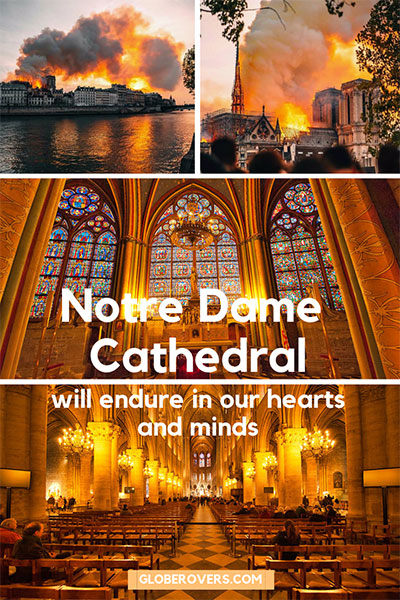

Blog post and photos by Peter who has been travelling almost full-time since 2005 and has been to over 122 countries. He visited several countries, such as Japan, more than 20 times. Peter is Editor-in-Chief and Publisher of GlobeRovers Magazine, an independent travel magazine focused on intrepid destinations.

